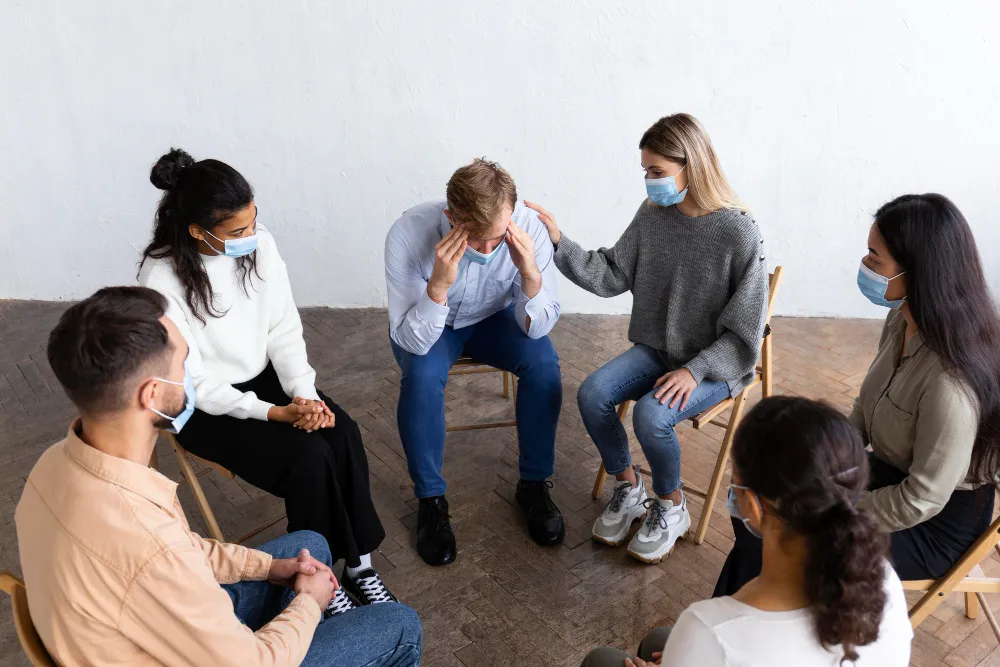
Introduction to Knife Crime Awareness Training
Welcome to Ignite Training Solutions. Ignite Training Solutions is a training organisation operating nationally to bring our customers up to date relevant and exiting training solutions. At Ignite we are dedicated to providing top-quality Knife Crime Awareness Training to meet your requirements. Our mission is to deliver innovative training which can be immediately implemented in the workplace.
What is Knife Crime Awareness Training
Knife crime awareness training is a specialized program designed to educate individuals and professionals about the prevalence, risks, and consequences of knife-related crimes. This training aims to equip participants with the knowledge and skills necessary to recognise, prevent, and respond to incidents involving knives. By addressing the root causes and warning signs, and teaching effective intervention strategies, knife crime awareness training plays a critical role in fostering safer communities. Here are the key aspects and components of knife crime awareness training:
Ignite Training Solutions Typical Content of Knife Crime Awareness Training
All our courses are tailored to our clients needs but our typical content would cover:
Knife crime awareness training typically covers a comprehensive range of topics aimed at understanding, preventing, and responding to knife-related violence. The content is designed to be relevant for various audiences, including law enforcement, educators, healthcare professionals, community workers, and the general public. Below is a detailed outline of the typical content included in knife crime awareness training:

Definition and Scope: Explanation of what constitutes knife crime, including possession, use, and threats involving knives. - Statistics and Trends: Overview of knife crime prevalence, patterns, and trends, providing context with local, national, and international data.

De-escalation Skills: Training in communication, body language, and tactics to defuse potentially violent situations. - Safe Intervention: Assessing risk, knowing when and how to involve law enforcement, and ensuring personal safety during interventions.

First Aid and Trauma Care: Basic first aid for knife injuries, including wound management, controlling bleeding, and CPR. - Emotional and Psychological Support: Providing guidance on supporting victims emotionally and psychologically, including referrals to counselling services.

Engagement and Outreach: Encouraging community participation in prevention efforts through events, workshops, and forums. - Collaboration with Agencies: Strategies for building partnerships between community organizations, law enforcement, schools, and healthcare providers to tackle knife crime collectively.

Behavioural Indicators: Recognition of changes in behaviour that might signal involvement in knife crime, such as increased aggression, secretive actions, and changes in social circles. - Physical Signs: Identifying physical evidence like possession of knives, injuries from knife use, or modifications to clothing for concealing weapons.

Laws and Regulations: Overview of laws related to knife possession, use, and the consequences of illegal activities involving knives. - Reporting Procedures: Guidance on the duty to report knife crime incidents, including mandatory reporting laws and procedures for accurate and timely reporting.

Analysing Incidents: Reviewing real-life knife crime cases to understand dynamics, decision-making processes, and outcomes. - Role-Playing Exercises: Engaging in role-playing scenarios to practice skills in a controlled environment.

Interactive Sessions: Hands-on activities to reinforce learning, such as group discussions, brainstorming sessions, and problem-solving exercises. - Skill-Building Workshops: Focused workshops on specific skills, like conflict resolution, first aid, and legal knowledge.

Knowledge Assessment: Pre- and post-training assessments to gauge participants' understanding and knowledge retention. - Feedback Mechanisms: Collecting feedback from participants to improve future training sessions and address specific needs.

Educational Materials: Providing handouts, booklets, and online resources for further learning and reference. - Support Networks: Information on support services, helplines, and community resources available for ongoing assistance and intervention.

Individual Plans: Helping participants develop personal action plans for applying what they've learned in their specific roles and communities. - Follow-Up Support: Offering follow-up sessions or check-ins to support participants in implementing their action plans and addressing challenges.

Community Programs: Highlighting successful initiatives, such as youth clubs, mentorship programs, sports, arts projects, and community outreach. - School-Based Interventions: Implementing anti-violence curricula, peer mediation, and creating a safe school environment. - Public Awareness Campaigns: Using media and public relations to raise awareness and promote community involvement in knife crime prevention.

Socioeconomic Factors: Exploration of how poverty, unemployment, lack of education, and social exclusion contribute to knife crime. - Psychological Factors: Discussion on mental health issues, trauma, and behavioural problems that may lead individuals to carry and use knives. - Cultural Influences: Examination of the role of peer pressure, gang culture, media, and entertainment in promoting knife crime.
Knife crime awareness training is designed to be comprehensive and practical, providing participants with the knowledge, skills, and resources needed to address and prevent knife crime effectively. By covering these diverse topics and incorporating interactive elements, the training ensures that participants are well-prepared to make a positive impact in their communities and professional environments.
Key Aspects of Knife Crime Awareness Training

Understanding Knife Crime
- Definition and Scope: Explaining what constitutes knife crime, including illegal possession, use, and threats involving knives. This also involves understanding the legal definitions and the various forms knife crime can take, from street altercations to domestic incidents. - Statistics and Trends: Providing comprehensive data on the prevalence and patterns of knife crime in different regions and among various demographics. This includes understanding geographical hotspots, age groups most affected, and trends over time.

Identifying Warning Signs
Behavioural Indicators: Recognising changes in behaviour that may indicate an individual is at risk of being involved in knife crime, such as increased aggression, secretive behaviour, or sudden changes in social circles. - Physical Signs: Noticing physical evidence like possession of knives, injuries consistent with knife use, or clothing designed to conceal weapons. Training often includes how to conduct searches and what to look for.

Risk Factors and Causes
Social and Economic Factors: Exploring the underlying causes of knife crime, such as poverty, social exclusion, unemployment, and lack of educational opportunities. Understanding these factors helps in addressing the root causes rather than just the symptoms. - Psychological Factors: Understanding the mental health aspects and behavioural issues that may lead individuals to carry and use knives. This includes recognizing signs of depression, trauma, or other mental health conditions that may contribute to violent behaviour. - Cultural Influences: Examining how peer pressure, gang culture, and media portrayal of violence can influence knife crime. This aspect of training often includes discussions on how societal norms and media representations can impact behaviour.
Knife crime awareness training is a vital tool for empowering individuals and communities to address and prevent knife-related violence. By educating participants about the complexities of knife crime and equipping them with effective strategies and skills, this training contributes to creating safer and more resilient communities. The comprehensive nature of the training ensures that all relevant parties—from law enforcement to educators to community workers—are prepared to play their part in tackling this serious issue. Investing in knife crime awareness training not only saves lives but also improves the quality of life for all community members, fostering a sense of security and well-being.
Benefits of Knife Crime Awareness Training






Target Audience for Knife Crime Awareness Training

Ex-Offenders and Rehabilitation Workers
Ex-Offenders: Individuals who have previously been involved in knife crime can benefit from training as part of rehabilitation programs, helping them reintegrate into society and avoid reoffending. Rehabilitation Staff: Professionals working in prisons, probation services, and rehabilitation programs who support ex-offenders in transitioning back into the community.

Educational Institutions
Teachers and School Administrators: Staff at primary, secondary, and higher education levels need to be aware of the signs of knife possession and the underlying issues that may lead to knife crime among students. They play a crucial role in early intervention and prevention. School Counsellors and Psychologists: Professionals who provide mental health support and counselling can help at-risk students and implement preventative measures.

Youth and Community Workers
Youth Workers: Individuals who work with young people in various settings, such as youth clubs, after-school programs, and community centers, play a crucial role in knife crime prevention by offering guidance and support. Community Leaders and Activists: People who lead community organizations or are involved in grassroots efforts to reduce violence can benefit from training to better support their initiatives.

Employers and Workplace Managers
HR and Management: In certain high-risk areas, workplace training can help managers and HR professionals understand how to support employees affected by knife crime or those who might be at risk.

Social Services and Support Organizations
Social Workers: Professionals who provide support to vulnerable individuals and families need to understand the dynamics of knife crime and how to intervene effectively. Charity Workers: Staff and volunteers from charities focused on violence prevention, youth development, and community safety.

Parents and Guardians
Parents and Caregivers: Training can help them recognise the signs of involvement in knife crime and understand how to support and guide their children away from such activities.

Law Enforcement
Police Officers: Frontline officers, detectives, and community policing units who are often the first responders to knife crime incidents need to be equipped with the knowledge and skills to handle these situations safely and effectively. Community Support Officers: Officers who work within communities to build relationships and trust, helping to identify and address issues related to knife crime. Security Guards: Personnel working in public venues such as shopping centers, events, and schools need to recognize and respond to potential knife threats.

Healthcare Professionals
Emergency Room Staff: Doctors, nurses, and paramedics who are often the first to treat victims of knife crime need to understand the broader context and the importance of reporting and supporting prevention efforts. Mental Health Professionals: Psychiatrists, psychologists, and counselors who work with individuals affected by violence or who may be at risk of committing knife crime.
FAQs : Knife Crime Awareness Training
A handout is available on request
